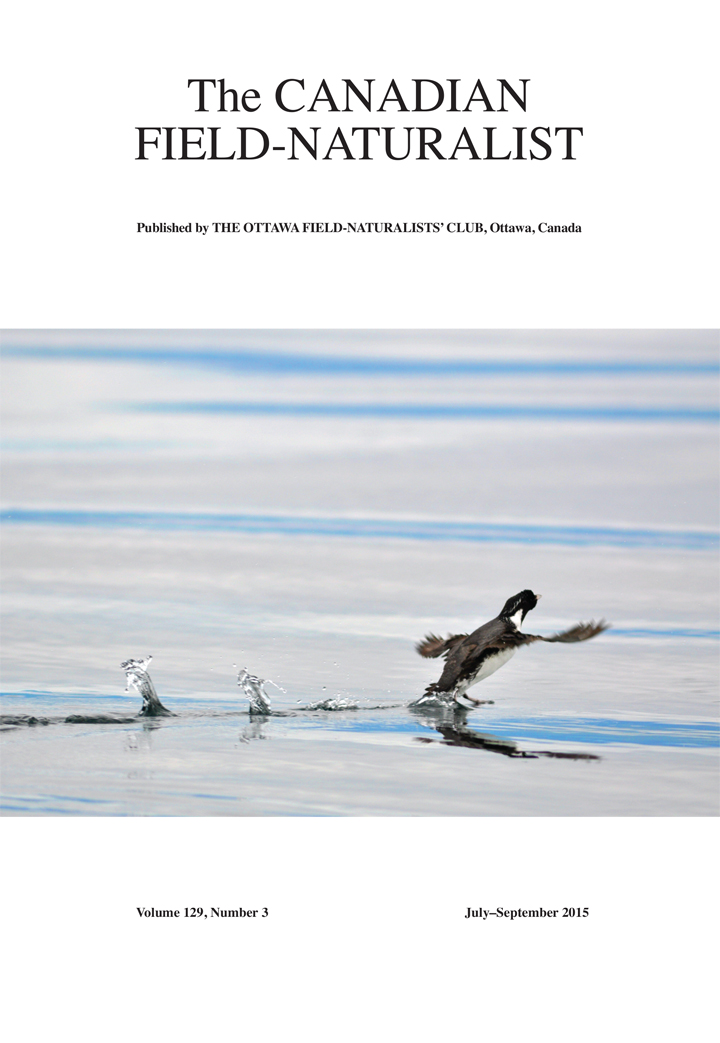Impact of a major forest blowdown event on breeding of Ancient Murrelets, Synthliboramphus antiquus, at a colony in Haida Gwaii, British Columbia
DOI:
https://doi.org/10.22621/cfn.v129i3.1730Keywords:
Ancient Murrelet, Synthliboramphus antiquus, Haida Gwaii, Queen Charlotte Islands, chick departure, blowdown, breeding successAbstract
In the winter of 2010–2011 a large storm blew down an area of about 18 ha of mature coastal rainforest on East Limestone Island, Haida Gwaii, British Columbia. The area supported part of a breeding colony of Ancient Murrelets (Synthliboramphus antiquus). Observations of the timing of chick departures from this section of the colony in 2012 and 2013 suggested that daily timing of chick departures were delayed, on average, by about 30 min, compared with earlier years. This delay may have been caused by debris from the blowdown impeding the progress of chicks over the ground. A sharp decrease in the number of chicks leaving the blowdown area in 2014 may signify that some breeding pairs left the area following reduced breeding success.Downloads
Published
Issue
Section
License
Copyright for Canadian Field-Naturalist content is held by the Ottawa Field-Naturalists' Club, except for content published by employees of federal government departments, in which case the copyright is held by the Crown. In-copyright content available at the Biodiversity Heritage Library is available for re-use under a Creative Commons Attribution-NonCommercial-ShareAlike 4.0 (CC BY-NC-SA 4.0) licence. For usage of content at the BHL for purposes other than those allowed under this licence, contact us.
To request use of copyright material, please contact our editor, Dr. Dwayne Lepitzki: editor -at- canadianfieldnaturalist -dot- ca





